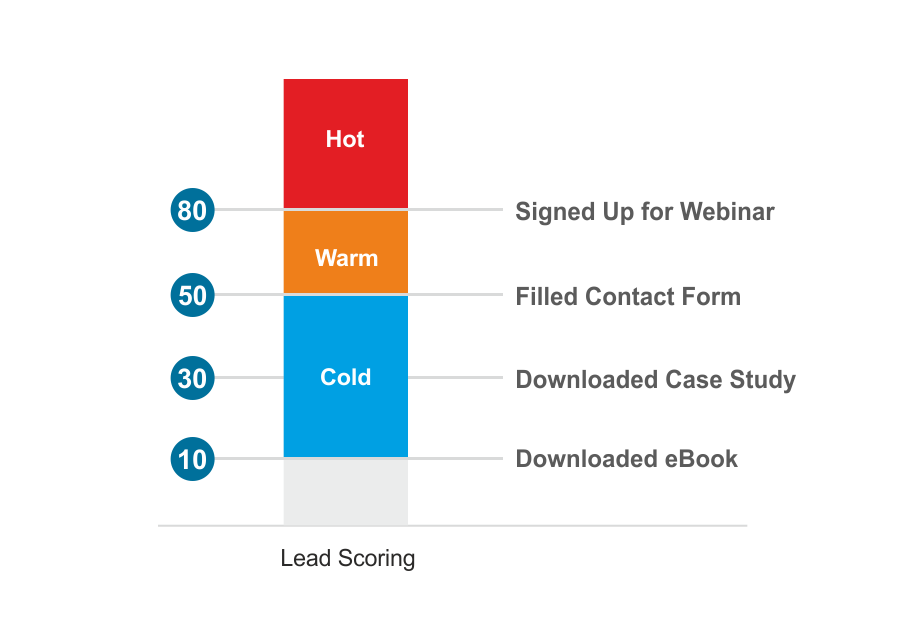Are you giving your leads the TLC they need and deserve? One of the biggest challenges facing B2B companies is how to effectively engage and nurture leads.
The pitfall some marketers fall into is when a lead comes in they’ll wait two months before sending an email. Then, suddenly they wake up and send three emails at once.
Emails are a great touchpoint for reaching out to customers. However, neglecting to send them in a timely manner or sending too many at once is ineffective. In fact, this behavior can have quite the opposite affect and leave potential customers feeling flat cold.
Like many things in life, lead nurturing depends on consistency.
How can marketers prevent valuable leads from slipping through the cracks?
Here are 5 ways marketing automation can improve engagement and nurture leads.
1. Consistently Engage Leads with Multiple Touchpoints
One of the best ways to bring consistency to your email marketing campaigns is with a marketing automation platform. When you stay consistent with lead nurturing, your company stays on the user’s mind over a period of many months. When the time comes and they are ready to buy, you’ll be the first one they reach out to.
Email marketing campaigns that target various audiences within an organization with relevant content are more effective.
Consistent marketing is advantageous for high-strategic growth, or ‘hockey stick growth,’ as it’s known in the marketing world. Of course, many marketing platforms are available that do email marketing, and many can do rules-based email campaigns as well. But with Marketo, in addition to designing flow and creating rules, you can create triggers to further engage leads.
Let’s say the company you are targeting is hosting an annual conference. You can tie triggers to send an email about their special event. Not only can you get their attention by personalizing the message, but you gain their trust.
2. Nurture Leads with Personalize Content
Marketing automation can target a personalized email to leads according to where they are in the marketing funnel. In the screenshot below, leads are segmented into 3 different streams depending on their behavior:
For example, when a contact from a cold stream clicks on an email, he will be triggered to go into a warm stream where he will receive emails for warm leads.
3. Target Stakeholders with Customer Personas
The typical buying life cycle generally involves several stakeholders at three levels within the organization. By leveraging rules, you can successfully target various personas with different messages within one organization.
An email drip campaign was created for the following personas:
- Influencers/Researchers – Managers or specialists who influence a certain project or a certain buying decision.
- Approvers –Directors or VPs who approve a project or make the decision to say yes, we need this specific purchase.
- Decision Makers – CEOs, CMOs who sign on the dotted line.

Engaging different buyer personas requires presenting information in various content formats. Consider this: An influencer/researcher may be inclined to read a blog, while an approver might only have time to listen to a podcast on her way home from work. Decision makers are more prone to digest in-depth industry news like white papers or ebooks. In targeted email campaigns, you can recommend content in the format and language a particular audience is more likely to want.
4. Score Leads with a Lead Scoring Mechanism
Lead nurturing essentially means consistently communicating with your subscriber base. Lead scoring happens after you generate a lead by assigning a specific point to score that lead based on their engagement with the content.
Marketing automation scores leads according to engagement to determine the best time to pass the lead to the sales team.

Lead nurturing and lead scoring can work together to determine the best time to hand off a lead to the sales team.
Nurturing and scoring leads at the same time creates a lead scoring mechanism. For example, if someone downloads an eBook on your website they are assigned a score of 10 points.
Over the next two months, each time they engage by downloading additional content, either on your website or through your email campaigns, their score increases. When they hit a threshold of say, 80 points out of 100, that lead is passed onto sales.
Not only that, a marketing automation platform can create lead alerts. Anytime a lead hits a predesignated score, an email alert is sent to the salesperson involved in the lead generation process.
5. Pass the Sales Qualified Lead (SQL) to the Sales Team
Companies often assign salespeople to territories or regions. Rules can assign attributes to leads based on specific criteria like region or geographic location.
Once a lead hits a predetermined score, the Sales Qualified Lead (SQL) passed off to a specific salesperson who manages a region and the lead can go directly into their sales Customer Relationship Management (CRM) system. The salesperson then contacts the prospect. If they determine the customer is not yet ready to buy, the lead goes back into the funnel to be further nurtured.
Marketing automation efficiently aligns Marketing & Sales to work together to send email campaigns. Prospects can engage with your brand and are nurtured consistently over a period of time before being passed to the sales team.
With a marketing automation platform like Marketo, companies can rest assured the right emails are sent to the right person at (hopefully) the right time.
Did you enjoy this article? How do you use marketing email campaigns to engage nurture leads? Let’s connect and chat about how to use marketing automation for your company’s nurture campaigns.
Read the full article here














